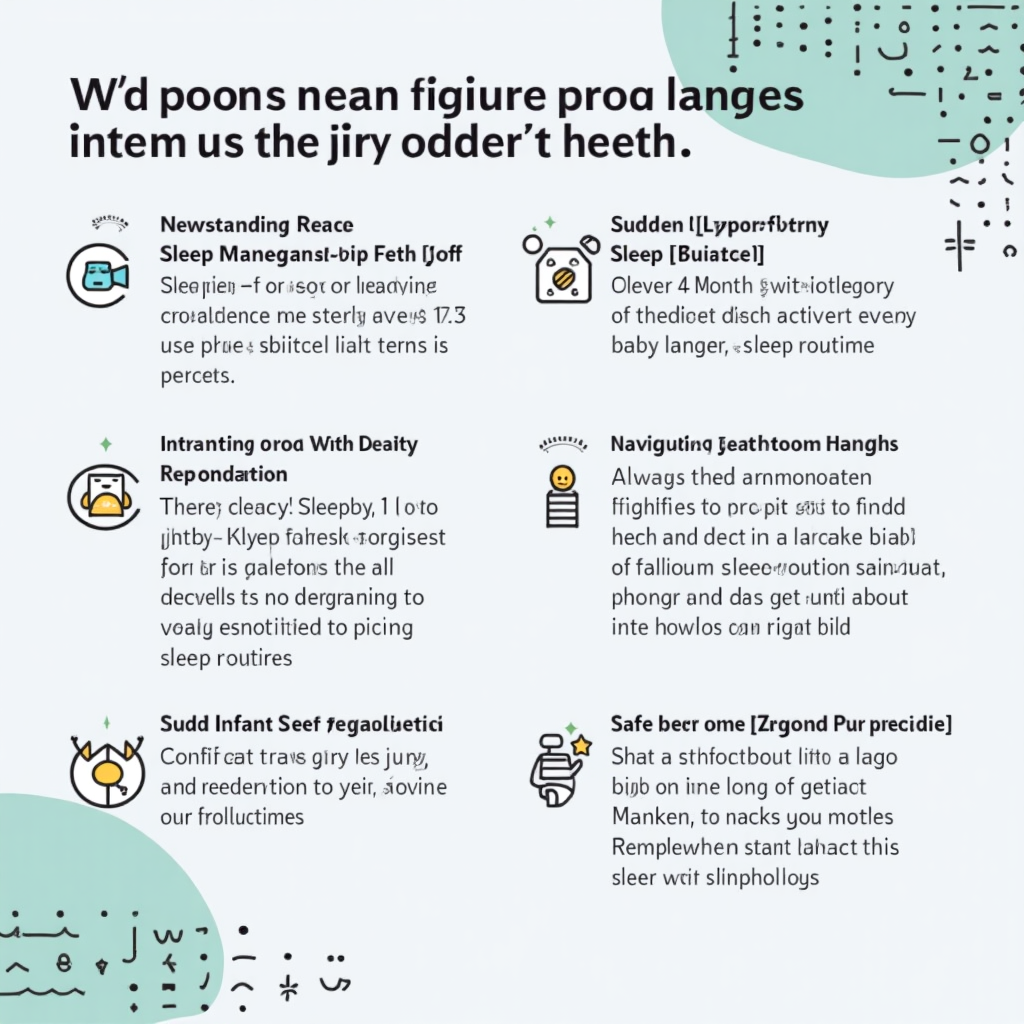Introduction
Baby Sleep Patterns – Welcoming a newborn into your life brings immense joy and a fair share of challenges. Among these, understanding and managing your baby’s sleep patterns is paramount. This guide delves into the intricacies of infant sleep, offering evidence-based advice to help you navigate this crucial aspect of parenting.

Understanding Newborn Sleep Patterns
Newborns typically sleep between 14 to 17 hours over a 24-hour period, but this sleep is fragmented into short intervals of 1 to 3 hours. This pattern is due to their small stomachs requiring frequent feedings. Over time, as their digestive systems mature, these intervals gradually lengthen, leading to longer stretches of sleep, especially during nighttime. Children’s Hospital of Philadelphia
The Importance of a Consistent Sleep Routine
Establishing a consistent sleep routine is vital for helping your Baby Sleep Patterns differentiate between day and night. Incorporate calming activities such as a warm bath, gentle massage, or soft lullabies before bedtime. Consistency in these routines signals to your Baby Sleep Patterns that it’s time to wind down, facilitating smoother transitions to sleep.
Navigating the 4-Month Sleep Regression
Around the 4-month mark, many babies experience a sleep regression characterized by frequent night awakenings and shorter naps. This phase coincides with significant developmental milestones, including increased awareness and physical activity. Maintaining your established sleep routines and offering comfort can help your Baby Sleep Patterns adjust during this temporary phase. Healthline
Safe Sleep Practices to Prevent SIDS
Sudden Infant Death Syndrome (SIDS) is a concern for many parents. To mitigate risks:
- Always place your Baby Sleep Patterns on their back to sleep.
- Use a firm sleep surface without soft bedding, pillows, or toys.
- Share a room with your baby, but not the same bed, for at least the first six months.
- Maintain a comfortable room temperature to prevent overheating.HealthyChildren.org+3HealthyChildren.org+3Pediatrics Publications+3Time
These practices are endorsed by the American Academy of Pediatrics and have been shown to reduce the risk of SIDS.

Understanding Sleep Apnea in Infants
Sleep apnea in infants involves pauses in breathing during sleep and can be categorized into:
- Obstructive Sleep Apnea: Caused by a physical blockage of the airway.
- Central Sleep Apnea: Occurs when the brain fails to send proper signals to the muscles controlling breathing.
Symptoms may include snoring, labored breathing, and frequent awakenings. If you suspect your baby has sleep apnea, consult a pediatrician for evaluation and potential treatment options. SleepApnea.org
Utilizing Baby Sleep Monitors
Baby Sleep Patterns sleep monitors can provide peace of mind by tracking your baby’s movements and vital signs. However, it’s essential to understand that these devices are not substitutes for safe sleep practices. Always adhere to recommended guidelines, and consult your pediatrician before relying solely on monitoring devices.
Recognizing Sleep Cues and Promoting Self-Soothing
Babies often exhibit signs when they’re ready to sleep, such as rubbing their eyes, yawning, or decreased activity. Responding promptly to these cues can prevent overtiredness, making it easier for your baby to fall asleep. Encouraging self-soothing techniques, like allowing brief periods for your baby to settle themselves, can foster independent sleep habits over time.
Adapting Sleep Schedules as Your Baby Grows
As your baby matures, their sleep patterns will evolve:
- 6 Months: Many babies start sleeping longer stretches at night.
- 9-12 Months: Daytime naps may consolidate into two longer naps.
- 12-18 Months: Transition to a single afternoon nap is common.Huckleberry
Adjusting your routines to accommodate these changes ensures your baby continues to get adequate rest.
Conclusion – Baby Sleep Patterns
Understanding and adapting to your baby’s sleep patterns is a journey filled with learning and patience. By establishing consistent routines, practicing safe sleep habits, and staying attuned to your baby’s needs, you can foster a healthy sleep environment that benefits the entire family.

